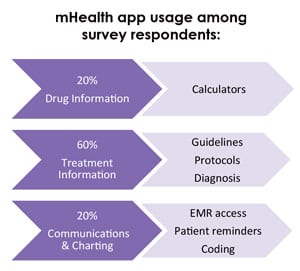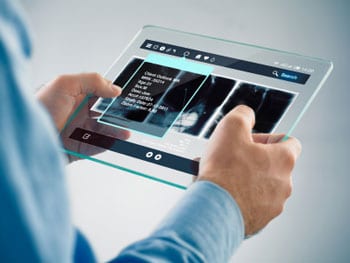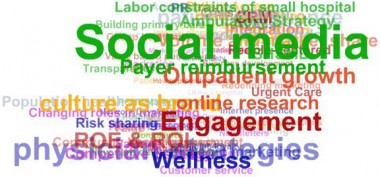Mobile Health: Revolutionizing Technology at the Point of Care
Last week, we released a new white paper for one of our clients to highlight the growing use of mobile apps by specialty physicians. In tracking physician communication patterns over the past four years, we found mobile health technologies are steadily gaining ground as a preferred form of communication and information retrieval.
 The white paper explores a potential revolution in the application of technology to diagnosis and patient care. Of the 365 physicians who participated in our online survey, those who use mobile medical apps on a daily basis reported a difference in how they practice medicine – they use the apps to enhance at-the-bedside functionality, patient education, and even diagnostic capabilities. A breakdown of mHealth app usage among our survey respondents is shown to the right…
The white paper explores a potential revolution in the application of technology to diagnosis and patient care. Of the 365 physicians who participated in our online survey, those who use mobile medical apps on a daily basis reported a difference in how they practice medicine – they use the apps to enhance at-the-bedside functionality, patient education, and even diagnostic capabilities. A breakdown of mHealth app usage among our survey respondents is shown to the right…

Read more

 Technology is rapidly changing healthcare. Mainstream devices can now go far beyond provider-patient communication and into specialized patient care, and things are just getting started.
Technology is rapidly changing healthcare. Mainstream devices can now go far beyond provider-patient communication and into specialized patient care, and things are just getting started. With so many patient-facing changes in healthcare these days, it’s no surprise the role of the hospital community relations director is also changing. Once focused primarily on communications, advertising and outreach, today’s community relations directors now drive patient experience, hospital strategy and business development.
With so many patient-facing changes in healthcare these days, it’s no surprise the role of the hospital community relations director is also changing. Once focused primarily on communications, advertising and outreach, today’s community relations directors now drive patient experience, hospital strategy and business development.

